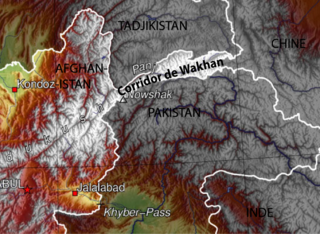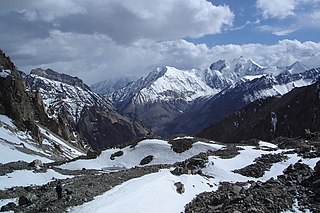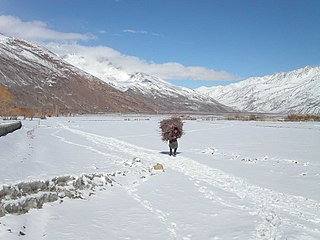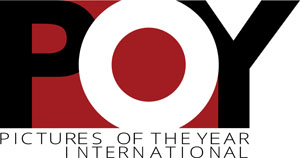
The Amu Darya, also called the Amu, the Amo, and historically the Oxus, is a major river in Central Asia and Afghanistan. Rising in the Pamir Mountains, north of the Hindu Kush, the Amu Darya is formed by the confluence of the Vakhsh and Panj rivers, in the Tigrovaya Balka Nature Reserve on the border between Afghanistan and Tajikistan, and flows from there north-westwards into the southern remnants of the Aral Sea. In its upper course, the river forms part of Afghanistan's northern border with Tajikistan, Uzbekistan, and Turkmenistan. In ancient history, the river was regarded as the boundary of Greater Iran with Turan, which roughly corresponded to present-day Central Asia. The Amu Darya has a flow of about 70 cubic kilometres per year on average.

The Wakhan Corridor is a narrow strip of territory located within the Badakhshan province of Afghanistan. This corridor stretches eastward, connecting Afghanistan to Xinjiang, China. It also separates the Gorno-Badakhshan Autonomous Region of Tajikistan in the north from northern Pakistan in the south. This high mountain valley serves as the source of both the Panj and Pamir rivers, which converge to form the larger Amu River. For countless centuries, a vital trade route has traversed this valley, facilitating the movement of travelers to and from East, South, and Central Asia.

thumb

Wakhan, or "the Wakhan", is a rugged, mountainous part of the Pamir, Hindu Kush and Karakoram regions of Afghanistan. Wakhan District is a district in Badakshan Province.

Steve McCurry is an American photographer, freelancer, and photojournalist. His photo Afghan Girl, of a girl with piercing green eyes, has appeared on the cover of National Geographic several times. McCurry has photographed many assignments for National Geographic and has been a member of Magnum Photos since 1986.
Marcus Terence Luke Bleasdale is a British photojournalist. His books include One Hundred Years of Darkness (2003), The Rape of a Nation (2009) and The Unravelling (2015). Bleasdale was appointed Companion of the Order of St Michael and St George (CMG) in the 2023 Birthday Honours for services to international photojournalism and human rights.

Pictures of the Year International (POYi) is a professional development program for visual journalists run on a non-profit basis by the Missouri School of Journalism's Donald W. Reynolds Journalism Institute. POYi began as an annual competition for photojournalism in 1944. POYi promotes the work of documentary photographers and magazine, newspaper, and freelance photojournalists.
Altaf Qadri is a Kashmiri photojournalist presently working with the Associated Press.
Stephen Alvarez is an American photojournalist. He is founder and president of the Ancient Art Archive, a global initiative to record, preserve, and share high-resolution images of ancient artwork. Throughout his career, he has produced global stories about exploration and culture. He became a National Geographic photographer in 1995. His pictures have won awards in Pictures of the Year International and Communications Arts and have been exhibited at Visa Pour L’Image International Photojournalism Festival in Perpignan, France.

Les Stone is an American photojournalist. He has received several World Press Photo and Pictures of the Year International awards for his work spanning from 1989 to the present.
Goran Tomašević, is a Serbian photographer. Working for The Globe and Mail since May 2022, he has spent more than 30 years travelling around the globe to cover the world's biggest stories.

Hossein Fatemi is an Iranian photojournalist. He received the 2nd place World Press Photo Award in 2017, and the Picture of the Year International (POYi) in 2016 and 2014 in two categories. He is a member of Panos Pictures since 2010.

Majid Saeedi is an Iranian documentary photographer.
Davide Monteleone is an Italian photographer. He won World Press Photo awards in 2007, 2009, and 2011. Since 2019 Monteleone is a National Geographic Storytelling Fellow.
David Guttenfelder is an American photojournalist focusing on geopolitical conflict, conservation, and culture. He is currently a photographer with National Geographic, based in Minneapolis. He is known for his photos of North Korea.

Benjamin Lowy is an American photojournalist. He is best known for his work as a conflict photographer in war zones, and is one of the early adopters of and a vocal proponent for mobile photography.
Muhammed Muheisen is a two-time Pulitzer Prize winning photographer and the recipient of numerous international awards. He is a National Geographic photographer and the founder of the Dutch non-profit organization Everyday Refugees Foundation.
Patrick Brown is an Australian photojournalist and photographer. Brown's project on the illegal trade in endangered animals won a World Press Photo Award in 2004 and a multimedia award from POYi in 2008. His book Trading to Extinction was nominated in the ten best photo documentary books of 2014 by AmericanPhoto. In 2019, he published No Place On Earth which provides an intimate portrait of the survivors of the persecution of the Myanmar's Rohingya population in 2017.

Khandaker Muhammad Asad, known as K M Asad, is a Bangladeshi documentary photographer and photojournalist. He is currently a photojournalist at Zuma Press news agency and contributor photographer for Getty images.

Felipe Dana is a Pulitzer Prize-winning Brazilian photojournalist for the Associated Press (AP).












